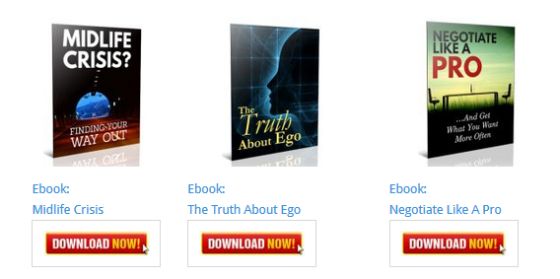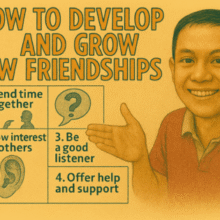3 Crucial Strategies for Resolving Conflict at Work
3 Crucial Strategies for Resolving Conflict at Work
Of all places, work is perhaps one of the worst places to experience interpersonal conflict. You have to maintain a professional working relationship with others, especially if you’re dependent on others if you work as part of a team.
Conflicts at work can destroy your credibility, perceived integrity, and self-esteem if you allow them to.
Whether you’re a newbie to the organization or someone with seniority, conflicts arise for all sorts of reasons. You might disagree with decisions of the upper management. You and another co-worker disagree over the best way to approach workflow. Or you may just get into a heated personal discussion during water cooler breaks.

Personal Development Blog Ebooks or
This Ebook: Negotiate Like A Pro And Get What You Want More Often
Whatever the conflict is, it’s important to take immediate action to resolve the issue and smooth things over. Damage control will not only protect yourself and your reputation, but it will also allow you to practice conflict resolution skills for the future.
Try these strategies to help smooth over your work conflicts and get everyone back on a positive track:
1. Active listening. One of the main keys to conflict resolution at work, or in any setting for that matter, is the principle of active listening. While you may nod in agreement as if you’ve heard it all before, take time to think about what the phrase “active listening” really means.
- Active listening itself is a skill that requires time, patience, and repeated practice. You must give the other side ample time to speak their mind and tell their side of the story or defend themselves.
- Active listening involves not just hearing the words they speak, but taking a few seconds to ponder what they mean. A good way to ensure that you’ve heard what someone else is saying is by repeating it back to them.
- For example, you can do this by saying, “To clarify, you said…” or even, “Please correct me if I’m wrong, but I thought I heard you say…” and then continue to rephrase in your own words what they said.

More Inspirational Poster by Daymond John
2. Respect others’ time. When emotions flare in the heat of the moment, this may not be the opportune time to address conflict head-on. Instead, ensure that you’re being respectful of others’ time by asking the other person about a good or appropriate time for them to come to the table.
- In addition to considering their time, it’s also important to be respectful of their feelings. Anytime you address a challenge or disagreement you have with another person, having a policy of a formal timeout can be used.
- A formal timeout gives both people the right to walk away – and come back at a later time – if they feel so heated that they cannot continue the conversation.
3. Pick your battles. Before you engage in conflict resolution with a coworker or boss at work, consider the importance of the issue at hand. Some conflicts aren’t worth your time and effort to resolve. Others, however, are important to address because they impact your reputation or some other personal value.
- A good rule of thumb to follow when deciding whether or not to resolve conflict involves regret. Ask yourself: “Will I regret this later if I do nothing about the situation?” Alternatively, ask “Will this issue matter one month or one year from now?”
- If the answer is “no” to either of those questions, then you may have an issue before you that you can just let go.

AD by Inspirational Media
When it comes to addressing disagreements at work, your communication with the other person is critical. Body language, tone of voice, the words you use, and attitude all factor into whether or not you’ll be successful.
Even if you’re not able to come to a resolution, you can rest assured that you’ve at least attempted to go about things in a thoughtful, appropriate manner.
Featured Personal Development Ebook:
Contentment is the place where we don’t need anything. We’re completely satisfied as we are, as our life is.
Think of how many things you do each day in an effort to feel more content. You say or do things to impress others, you say or do things to avoid being ridiculed by others, you work at a job you don’t like so you can make more money to buy things you want or to impress others and, you exercise and diet beyond what is reasonable in order to look a certain way. The list is really endless. We spend a lot of our day trying to feel more content. However, these things aren’t the path to radical contentment.
In this guide, discover how compassion will free you, heal you, and will lead you to radical contentment.
You will receive the file/s below (in one ZIP file) for your personal use:
MAIN EBOOK:
- Self-Acceptance (30-page PDF)
WORKSHEET:
- Self-Acceptance (6-page PDF)
BONUSES:
- 15 Ways to Have Your Best Year Ever (67 Slide Decks)
- 15 Ways to Have Your Best Year Ever (3 Slide Decks)
- Grayson the Go Getter Gopher Fable (4-page PDF)
- Top 5 Causes Behind Overeating and How to Avoid Them (3-page PDF)




